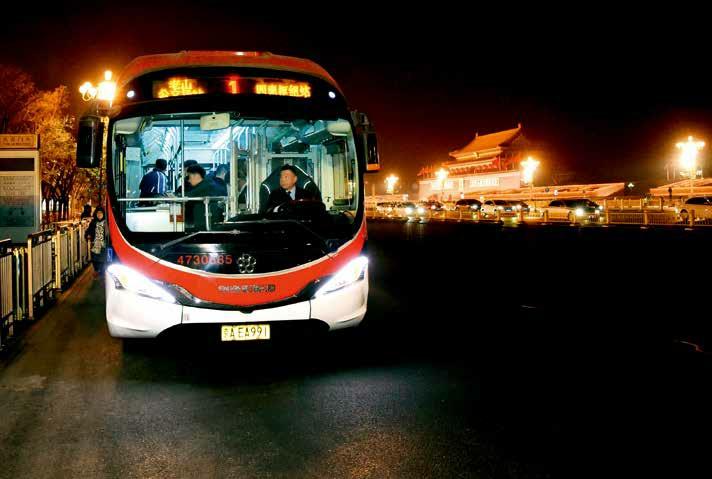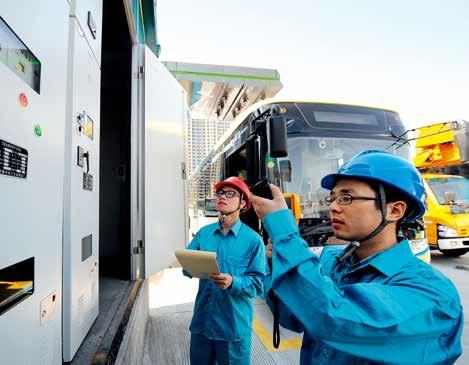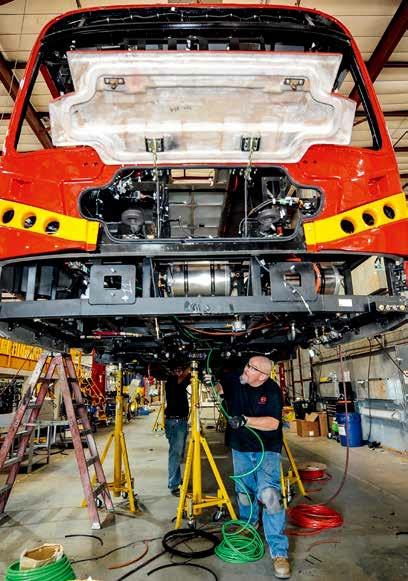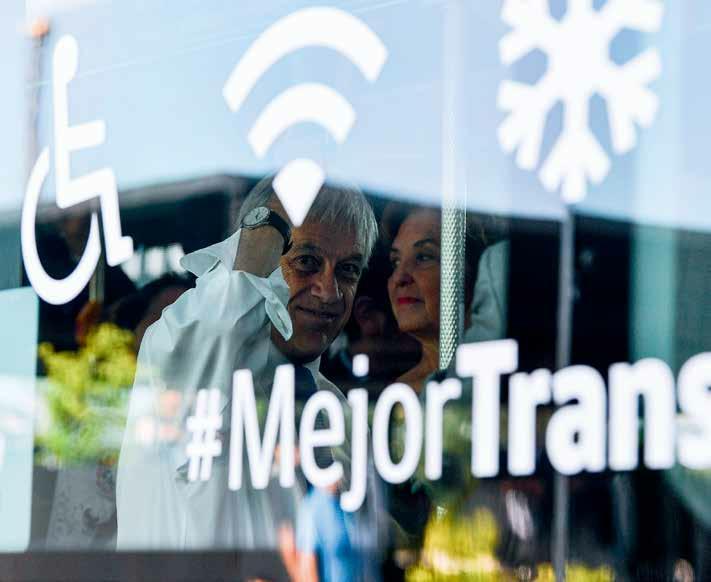Catching the Green Bus
2019-12-30LiuShaohuaandChenJialin
Liu Shaohua and Chen Jialin
According to the Research Report on New Energy Bus Promotion in Chinese Cities 2018 recently released by CCID Automobile Industry Research Center, one out of every three buses in China is a new energy vehicle. The report predicted that buses will play a lead role in the shift to green energy.
After more than a decade of development, new energy buses can be found in cities throughout China. In addition to the energy-saving and emission-reducing effects, those vehicles have continuously promoted green growth of the automobile industry by putting technological advancements into practice.
New Urban Landscapes
Chinas Ministry of Science and Technology, Ministry of Finance, National Development and Reform Commission and Ministry of Industry and Information Technology jointly launched a program in January 2009 to increase usage of new energy vehicles in the public transportation sector in large and medium-sized cities around the country. Ten years later, green buses have largely replaced traditional ones, slowly becoming the new norm for public transportation in China.
“Last time I visited Tiananmen Square with my classmates, the most eye-catching sight was the red giants barreling down the road,” recalled college student Wu Qiao after a trip to Beijing during his winter vacation. “Although the buses are big, they dont make much noise and seem to operate nicely.”
In October 2017, the first batch of 10 electric buses running Route 1 began operation. The 18-meter-long body features a streamlined shape and “Chinese Red” paint. At its heart is a lithium titanate fast-charge power battery pack capable of full recharge in 15 minutes and a maximum range of 130 kilometers. Its also quiet and doesnt emit any exhaust gas.
All public buses running in Shenzhen in southern China are now electric, making it the first mega-city in China and the world to achieve 100-percent electrification of public transport. More than 16,000 buses are operating on roads in the city every day, serving a population of 12 million people without producing any pollution.
Cities throughout China are accelerating conversion to new energy buses. According to the website of the Chinese Ministry of Industry and Information Technology, by the end of 2017, the total number of new energy buses operating in Chinas transportation system exceeded 250,000, accounting for nearly 40 percent of the total public buses in the country.
By 2020, all buses operating in municipalities directly under the central government of China and provincial capitals in key regions of China are expected to be replaced by new energy vehicles.
Promoting Green Growth
Compared to diesel buses, new energy vehicles are far more environmentally friendly. Each 8.5-meter totally electric bus can help save 16.6 tons of standard coal and reduce 41.3 tons of carbon dioxide emissions each year, which improves air quality considerably to build eco-friendly cities.
In Shenzhen, the average daily operating mileage of an electric bus is 174.4 kilometers, which saves 72.9-percent energy compared to a traditional diesel bus. That means Shenzhen can save 345,000 tons of fuel oil annually. According to a forecast from the Research Institute of Highway under the Ministry of Transport, during Chinas 13th Five-Year Plan period (2016-2020), new energy buses will save usage of a total of 5.93 million tons of standard coal, reducing carbon emissions by 12.5 million tons.
In addition to emission reductions, the public transportation system also promotes the development of a national new energy vehicle industry through technological advancements. Compared to developed countries such as the United States, Chinas automobile industry started late, and its manufacturing technology lagged behind. Since the country committed to the strategy of developing new energy vehicles, the public transportation industry, as a component of the urban transportation system, has leveraged advantages in terms of fixed operating lines and mileage, dedicated parking lots with charging facilities and public financial subsidies. Such factors create a convenient environment for research, production and operation of new energy vehicles.
Xu Yanhua, deputy secretary-general of the China Association of Automobile Manufacturers, noted that Chinas power battery shipments now account for more than 60 percent of the worlds total. The public transport-first strategy has effectively stimulated a technological upgrade of the new energy vehicle industry. Compared to a few years ago, the overall performance of green buses has greatly improved.
Going Global
In October 2017, Chinese automaker BYD delivered its first order of the completely electric bus C6 to the Nepalese Ministry of Culture, Tourism and Civil Aviation in Kathmandu, the capital of Nepal. It marked a big step for BYD to become a global provider of electric vehicles.
But it wasnt the first time Chinas new energy buses ventured abroad. Today, Chinesemanufactured new energy buses serve in cities in Egypt, the Philippines, Singapore, Japan, Hungary and other countries.
But when they first left China, the countrys new energy buses didnt win the same market approval as they have today. The Britain-based Daily Telegraph once said that China is known for producing cheap, fuel-inefficient cars.
In 2015, representing top-shelf Chinese electric vehicles, BYD shipped five electric buses to Kyoto, Japan for the first time. The Japanese media watched closely. Some Japanese netizens showed skepticism for Chinese-made products. Some even doubted whether the buses would last for a year. But that take didnt last long. According to the Japanese magazine BUSRAMA, after a year of operation, BYD buses had become favorites of drivers, passengers and operators alike. By the end of 2017, Japan made another order for 10 BYD pure electric K9 buses, making the country a repeat customer.
On November 23, 2018, a total of 100 Yutong electric buses sailed to Chile on ocean freighters. The order was Yutongs first new energy bus sale in Chile as well as the largest one-time export order for new energy buses from China, setting a record for a single overseas order of Chinese new energy buses.
Chinas new energy buses have now been exported to more than 30 countries and regions. Still, Chinese bus companies are exploring diversification from pure vehicle exporting to output of capital, technology and brands such as joint venture construction, technology transfer, technical training, trademark licensing and capital operation.
“Some countries are far behind in terms of construction, operation and management of charging infrastructure,” explained Xu Yanhua.“Chinas new energy buses have gone abroad and brought Chinese charging operators with them. In the process of the global public transportation transformation, China has been able to provide some of its own wisdom and experience.”